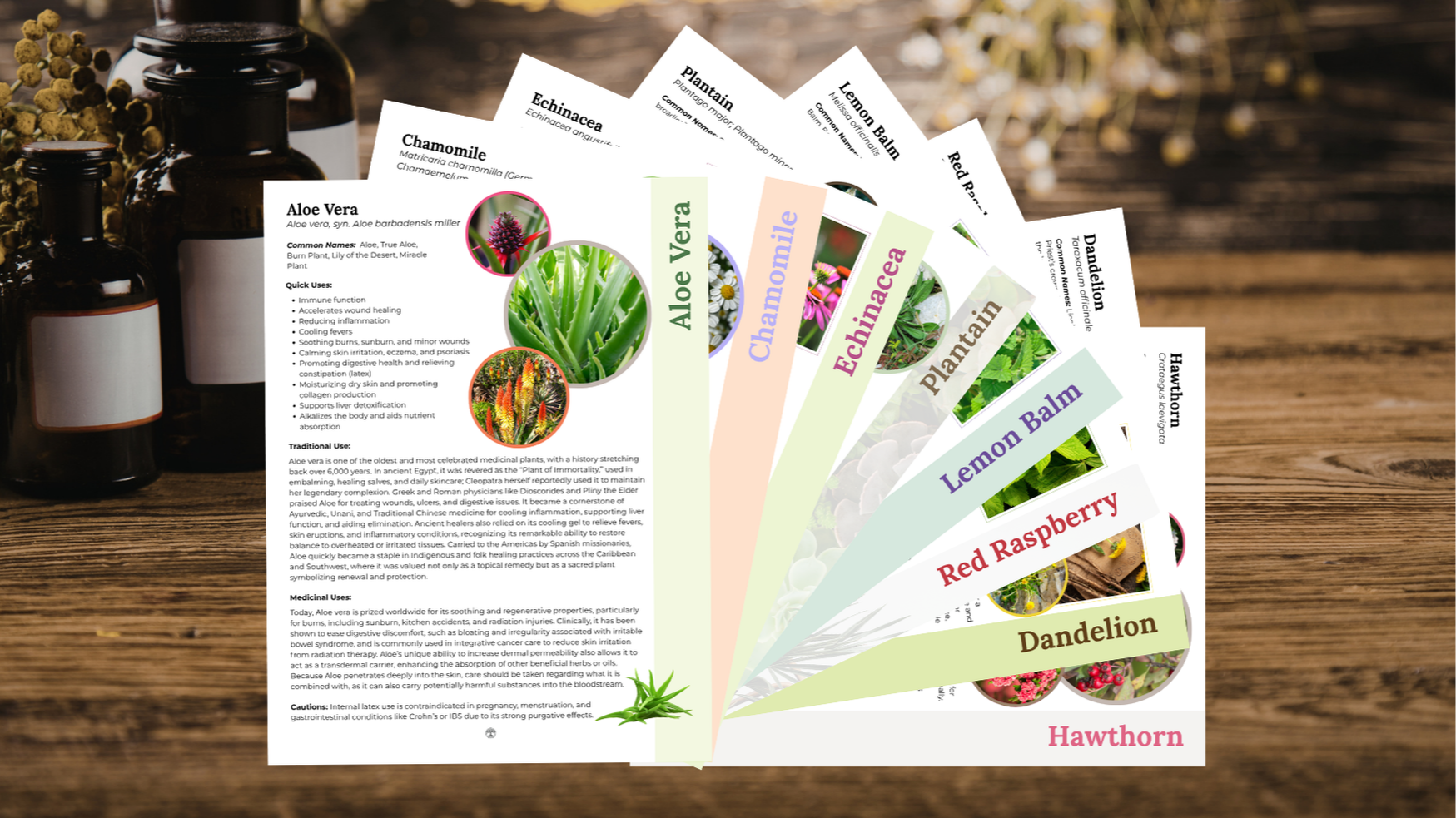
Leafy Relief Cabbage Wraps
Jul 02, 2025Mother Nature's Anti-Inflammatory Heroes
It’s easy to overlook cabbage. This crunchy, cruciferous vegetable often ends up as coleslaw or an afterthought on our dinner plates. But don’t let its humble appearance fool you. For centuries, cabbage has held a reputation not just as food, but as medicine, particularly when it comes to fighting pain, swelling, and inflammation.
While it might seem unusual to press a cabbage leaf onto a swollen knee or engorged breast, this folk remedy is far from fringe. In fact, both history and science are showing us that our grandmothers (and their grandmothers) were onto something powerful.
From Ancient Remedies to Scientific Research
The use of cabbage as a healing plant dates back thousands of years. Hippocrates, the father of modern medicine, reportedly used cabbage to treat wounds and reduce swelling and Roman naturalist Pliny the Elder wrote that cabbage could “clear the brain” and was a cure for everything from headaches to gout.
Fast forward to traditional European folk medicine, especially in Eastern Europe, where cabbage leaves became the go-to poultice for ailments involving inflammation. In Poland, for instance, crushed cabbage leaves were (and still are) used as external applications for rheumatic pain, inflamed veins, bruises, sprains, and mastitis (the painful swelling of breast tissue common among nursing mothers).
It doesn’t stop there. During World War I, cabbage doubled as both food and battlefield first aid. British soldiers were reportedly treated with cabbage compresses in the trenches to reduce swelling from trench foot, soothe ulcers, and draw out infection from abscesses.
As sometimes happens, these anecdotal folk remedies have captured the attention of modern researchers , who have started looking at cabbage through a scientific lens, and what they’ve found is pretty impressive.
Why Are Cabbage Leaves So Soothing?
Cabbage, especially in its raw leaf form, is loaded with bioactive compounds that offer serious therapeutic benefits. It contains flavonoids and polyphenols, (plant compounds known for their anti-inflammatory and antioxidant effects). Red cabbage, in particular, is rich in anthocyanins, which give it its purplish hue and provide additional anti-inflammatory power, both internally and externally.
One standout compound is sulforaphane, a sulfur-containing phytochemical found in all cruciferous vegetables. Sulforaphane has been shown in multiple studies to reduce levels of pro-inflammatory cytokines and may even protect joint cartilage.
A growing body of clinical evidence supports cabbage leaf therapy. A 2016 study cited by NutritionFacts.org evaluated the use of cabbage leaf wraps on individuals with osteoarthritis of the knee. The results? Daily cabbage compresses significantly reduced pain and improved mobility, results which are comparable to traditional over-the-counter topical treatments.
Other studies, including one published in the Journal of Clinical Nursing, found that women who used cabbage leaves to treat breast engorgement experienced relief that was equal to or better than cold gel packs. They also preferred the natural feel of cabbage.
How to Use Cabbage Leaves Topically
Creating your own cabbage compress is super simple and inexpensive. Here’s how to do it:
-
Choose fresh, whole leaves from green or red cabbage. Rinse and pat dry.
-
Gently bruise the leaves with a rolling pin or the back of a spoon to release the juices and soften them.
-
Chill the leaves in the refrigerator if you want a cooling effect, or warm them briefly for a soothing application.
-
Place the leaves directly on the affected area: swollen knees, sore joints, engorged breasts, bruises, or sprains.
-
Secure the leaves with gauze, plastic wrap, or a cloth bandage, and leave in place for 30–60 minutes. Overnight use is also fine.
-
Repeat daily until symptoms improve.
Why It Really Works
When chilled, cabbage leaves help constrict blood vessels, which can reduce swelling and ease discomfort. But the benefits go beyond temperature alone. Cabbage is rich in natural compounds like sulforaphane and polyphenols, which may be absorbed through the skin and work to calm inflammation in local tissues. These nutrients don’t act in isolation, rather, they work synergistically to support the body’s own healing processes. Unlike synthetic treatments that often target a single mechanism, cabbage leaves offer a gentle, holistic way to reduce inflammation, making them a simple yet surprisingly effective remedy for sore joints, swelling, and tender tissue. As long as you’re not allergic, it’s a safe, side-effect-free remedy worth trying in your natural wellness toolkit.
Author: Kristi Taylor, M.H.
https://pmc.ncbi.nlm.nih.gov/articles/PMC8987499/
https://pmc.ncbi.nlm.nih.gov/articles/PMC9200597
/https://www.researchgate.net/publication/390332444_Purple_Cabbage_Extract_Cream_A_Traditional_Herbal_Anti-Inflammatory_for_Elderly_Arthritis



